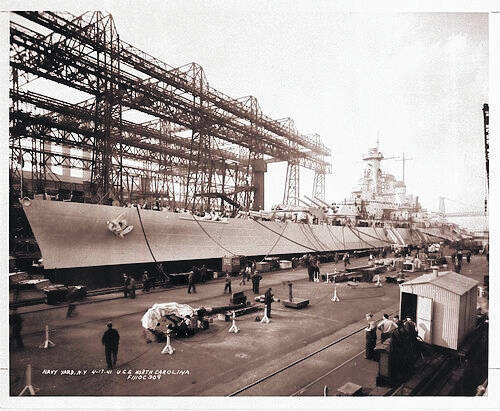THIS WEEK IN HISTORY
North Carolina History
On June 11, 1937, Eleanor Roosevelt kicked up her heels with the homesteaders at Penderlea. The First Lady visited Pender County to check on the progress at one of her husband Franklin’s premier homestead sites.
During the depths of the Depression, Wilmington industrialist Hugh MacRae conceived the idea of creating a model farm community at Penderlea on a grand scale. He had experimented with similar communities across southeastern North Carolina early in the 20th century.
The intention at Penderlea was to build the “best planned rural community in the world.” A tract of 10,000 acres was set aside, land was cleared and homes and a community center were built. MacRae disagreed with those in Washington as to how Penderlea should be managed, and, in May 1934, the entire program was federalized.
Though Roosevelt and his New Dealers were pursuing similar programs across the country, no other rural project was as large as Penderlea, though the original goal of 500 20-acre farms was never met. A total of 142 units were leased but, by 1941, few of the original homesteaders remained.
On June 13, 1940, the USS North Carolina (BB-55) was launched at the Brooklyn Navy Yard, beginning a highly decorated career. Commissioned on April 9, 1941, the ship became the first of ten fast battleships to join the fleet in World War II. The North Carolina and her sister ship, Washington, comprised the North Carolina Class of battleship.
At the time of her commissioning, the North Carolina was considered the world’s greatest sea weapon. Armed with nine 16-inch guns in three turrets and twenty 5-inch 38-caliber guns in 10 twin mounts, the North Carolina proved a formidable weapons platform.
The North Carolina in the Brooklyn Navy Yard in 1941. Image from the State ArchivesDuring World War II, the North Carolina participated in every major naval offensive in the Pacific theater, including the Battles of Guadalcanal, Marshall Islands, Luzon, Iwo Jima and Okinawa, earning 15 battle stars along the way. In all, the USS North Carolina carried out nine shore bombardments, sank an enemy troopship, destroyed at least 24 enemy aircraft and assisted in shooting down many more. Although the Japanese claimed six times that the USS North Carolina had been sunk, she survived many close calls and near misses, and by war’s end, had only lost 10 men in action and had 67 wounded.
Source: North Carolina Department of Natural and Cultural Resources
Nation and World History
On June 10, 1967, six days of war in the Mideast involving Israel, Syria, Egypt, Jordan and Iraq ended as Israel and Syria accepted a United Nations-mediated cease-fire.
On June 10, 1692, the first execution resulting from the Salem witch trials in Massachusetts took place as Bridget Bishop was hanged.
On June 13, 1967, President Lyndon B. Johnson nominated Solicitor-General Thurgood Marshall to become the first Black justice on the U.S. Supreme Court.
On June 14, 1775, the Continental Army, forerunner of the United States Army, was created.
On June 16, 1858, accepting the Illinois Republican Party’s nomination for the U.S. Senate, Abraham Lincoln said the slavery issue had to be resolved, declaring, “A house divided against itself cannot stand.”
Source: Associated Press








